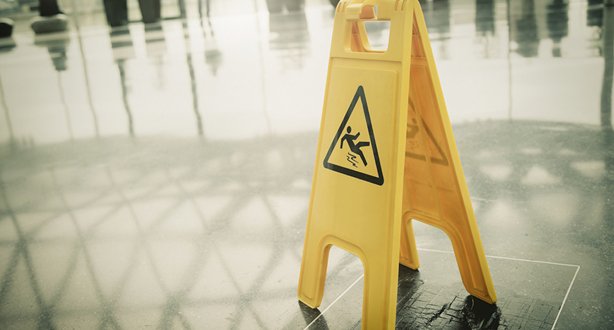Slip and falls are the leading cause of premise liability injuries, resulting in over a million slip and falls and more than 16,000 deaths per year. A nationwide survey reports that the plaintiffs won more cases than the defense in 2000 and the median compensatory awards have risen 88% between 1994 and 2000.
The five major causes for slip and fall accidents are lack of traction on walking surfaces, poor walking surface conditions, poor visibility, poor condition of handrails and guardrails and poor accessibility. By making sure that you have a high coefficient of friction (COF) between two surfaces, you will decrease the risk of a slip and fall accident. A coefficient of .5 is recommended for dry surfaces and according to the National Floor Safety Institute (NFSI), if you maintain a COF of .6 or higher on wet surfaces, you will reduce slip and fall claims by 50% – 90%.
Many factors influence slip resistance such as occasional spills, weather related hazards, wet and oily surfaces and the degree of surface wearing. By following general recommendations made by CNA, your facility may become a safer environment.
- Select slip resistant flooring materials when building, expanding or remodeling facilities. By installing products with high traction characteristics, you will reduce slip and fall issues. Before you purchase a flooring product, you should make sure it is certified by the National Floor Safety Institute.
- Select flooring products that are appropriate in specific industries. For example, stainless steel would be the best solution for food processing facilities.
- Ensure that you are using cleaning and maintenance products in accordance with the manufacturer’s recommendations.
- Install high quality sustainable flooring that is long lasting, decreasing the need for replacement.
- Review all slip and fall incident reports associated with the facility to understand the concerns that need to be addressed. A walkway auditing program can help identify trends within a facility that can result in reduced slip resistance of flooring surfaces.
- Make sure the stairs comply with the local building code and that nosings are highly visible and slip resistant.
The NFSI estimates that between 2005 and 2020, the number of seniors in the United States will increase from 35 million to 77 million. Statistically, seniors are more likely to experience a slip and fall accident and for those who are injured, the cost and recovery time is significantly higher than the average for non-seniors.

